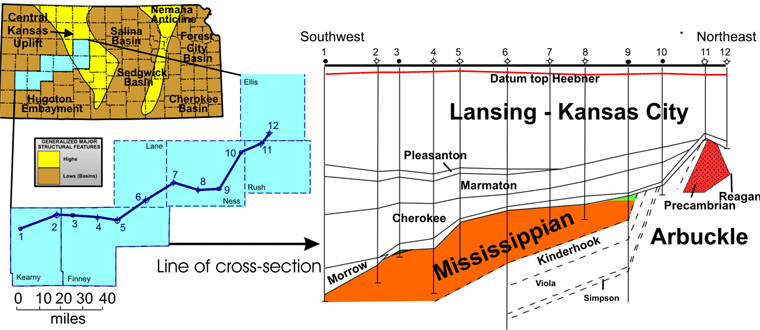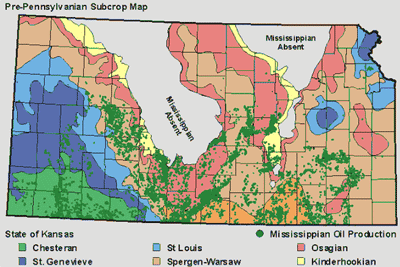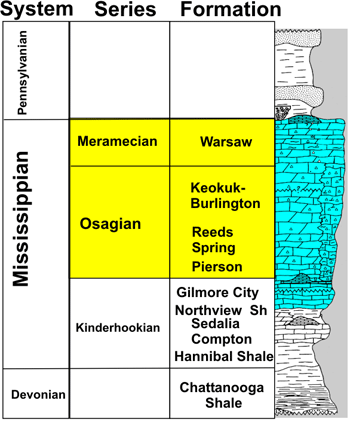Mississippian Limestones, Dolomites, and Cherts
Geologic Setting
The fields used in the study lie in Ness and Hodgeman Counties, Kansas which are located on the upper shelf of the Hugoton Embayment of the Anadarko Basin. The fields are situated on the southwest flank of the Central Kansas Uplift, a structural high during Mississippian time that was accentuated in post-Mississippian time. Mississippian units get progressively older as strata are traced onto the Central Kansas Uplift. The Schaben Field sits on the western edge of the Osagian subcrop and the Ness City and Bindley Fields are located in the center of the Warsaw subrop beneath the sub-Pennsylvanian unconformity. Strata in the fields represent shelf carbonates deposited on a gentle south-southwest sloping ramp. The transition from shelf carbonates to basin facies in Osage strata occurred some 15-20 km to the south of the Schaben Field area as mapped by Selk (1968). Post-depositional regional uplift, subaerial exposure and differential erosion of the ramp strata at the pre-Pennsylvanian unconformity resulted in paleotopographic highs (buried hills). These structural highs have been the targets of exploration and production efforts. The majority of Mississippian production in Kansas occurs at or near the top of the Mississippian section just below the sub-Pennsylvanian unconformity. Field locations can also be correlated in some areas with basement lineaments.
Southwest - Northeast Cross Section Illustrating Relationship of Stratigraphic Units With the Central Kansas Uplift

 |
Stratigraphic Column
|
|
|
e-mail : webadmin@kgs.ku.edu
Last updated May 2003
http://www.kgs.ku.edu/PRS/publication/2003/ofr2003-32/P2-01.html

